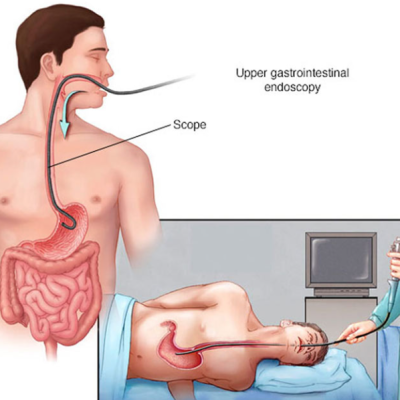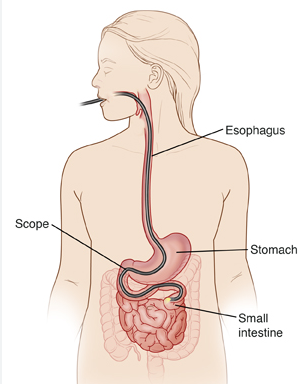ENTEROSCOPY
An enteroscopy is a procedure that looks within the small intestine (small bowel) while treating problems with it. Accessing this section of the intestine is challenging due to its length of almost 20 feet and narrow width of only 1 inch.
An endoscopy is a treatment used by your doctor to identify and treat digestive system issues. Your doctor will inject a tiny, flexible tube into your body with a camera attached during an enteroscopy. We refer to this as an endoscope. Typically, the endoscope has one or two balloons attached to it. In order to provide your doctor with a better image of your stomach, small intestine, and oesophagus, the balloons can be inflated. To extract a tissue sample for analysis through the endoscope, your doctor might use scissors or forceps.


Why Is an Endoscopy Done?
Enteroscopy eliminates the need for an incision when diagnosing or assessing internal medical conditions. It is frequently employed to identify issues with the stomach or small intestine. If you have any of the following conditions, your doctor might advise an enteroscopy:
Elevated white blood cell count small intestine tumours obstructed bowel passages unusual gastrointestinal haemorrhage
Unknown intestine damage following radiation therapy severe diarrhoea, inexplicable malnourishment, unusual X-ray findings
How the Exam Is Conducted ?
The upper gastrointestinal system is reached through the mouth by means of a thin, flexible tube called an endoscope. A doctor performing a double-balloon enteroscopy can see a portion of the small intestine by inflating balloons that are attached to the endoscope.
A flexible tube is sent through your colon and rectum during a colonoscopy. The ileum, the terminal segment of the small intestine, is typically accessible to the tube. A single, disposable capsule is swallowed during a capsule endoscopy procedure.
Samples of tissue taken during an enteroscopy are sent to a laboratory for analysis. (A capsule endoscopy cannot be used to take biopsies.)
